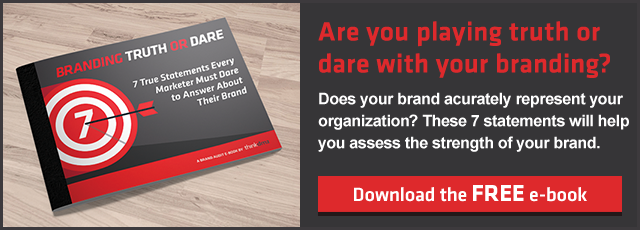
image credit: one photo/shutterstock.com
When it comes to your marketing company’s brand, its value and reception plays a vital role in how new and existing customers view your brand. This is known as brand equity. Ultimately, your brand equity relates to your brand’s value in relation to how recognizable it is and the response it generates. A brand without equity is like a sandwich with no toppings—a skeleton of something that could be so much stronger and more unique (not to mention tastier!)
Overall, there are three key metrics to brand equity that your marketing company will want to measure. In this post, we’ll be defining those metrics and the impact they can have on your branding.
Metric #1: Knowledge: How popular is your brand?
With regards to branding, popularity isn’t quite the same as it was back in grade school (no one is going to reject your brand from a cafeteria lunch table.) According to marketing influencer, Neil Patel, the popularity of your brand is measured based on two distinct areas: function and emotion.
Your brand’s functionality is related to how your audience actually uses your marketing company’s service or product. This means they need to fully understand what it is and isn’t capable of—its limitations and most notable instances of when it would be needed. In some cases, its purpose and usage may not be clearly defined to your audience, which can result in confusion and misalignment with your target demographic.
For example, a SaaS solution such as HubSpot carries a multitude of features ranging from email marketing, blogging, and lead generation. However, not every feature is available to all users. HubSpot uses a tier system based on Starter, Professional, and Enterprise—which is common for solutions of this nature. The key here is that HubSpot clearly outlines which tiers carry certain features and which company types/sizes they work best for. To avoid confusion in your own company’s services—even if you may not have tiers with different pricing—you want to be sure that you explain what your service can and cannot do.
On the emotional side, you want to understand how your brand makes your audience feel on a personal level. Does your brand make them feel valued, confident, and trusting? Emotion is a vital factor in brand equity because it’s what establishes brand loyalty and cultivates lasting relationships between your company and your customers. A brand should evoke a positive emotion that encourages both new and existing customers to return to your company when they are in need of a specific service.
Metric #2: Preference: How is your brand perceived?
The second metric for brand equity relates to the more objective rating of your brand, as opposed to subjective. In other words, it’s about how relevant your brand is in your industry, how capable it is to reach your target audience, and its value in terms of cost vs. gain. Regarding your brand’s relevancy, it’s important for your brand to have distinct features—or at least one in particular—that make it stand out among competitors in your industry.
For example, many SaaS companies may offer nearly identical services at first glance, but there is always going to be one critical detail that shows stronger brand equity over alternatives. When a potential customer is looking at your marketing company’s services, here are some of the questions they may have:
- Can I find a more affordable solution elsewhere?
- Do I see my company actually using the additional features offered?
- Does this company sound like they want to help me or simply make a sale?
- Is this company’s branding and messaging appealing to me?
Metric #3: Financial: What is the monetary value of your company’s brand?
This final metric of brand equity pertains to your brand’s monetary value in the market. This includes the sales percentage of your company’s product or service, existing revenue, and forecasted revenue based on trends, as well as the overall cost your company charges for your service. All of these factors come together to help determine how your marketing company should be measuring its financial metrics. Does your company’s market share align with its average growth? Is your generated revenue lower as a result of your cost being too high? These are some of the questions your marketing company will want to assess with its brand equity.
Measuring brand equity is a multi-step process, and these three metrics can help get your marketing company on the right track. For more branding strategies, check out the latest content from thinkdm2’s blog. Thinkdm2 is a digital marketing and branding agency located in New Jersey. We specialize in professional services for clients big and small in the technology, SaaS, and IoT industries.



